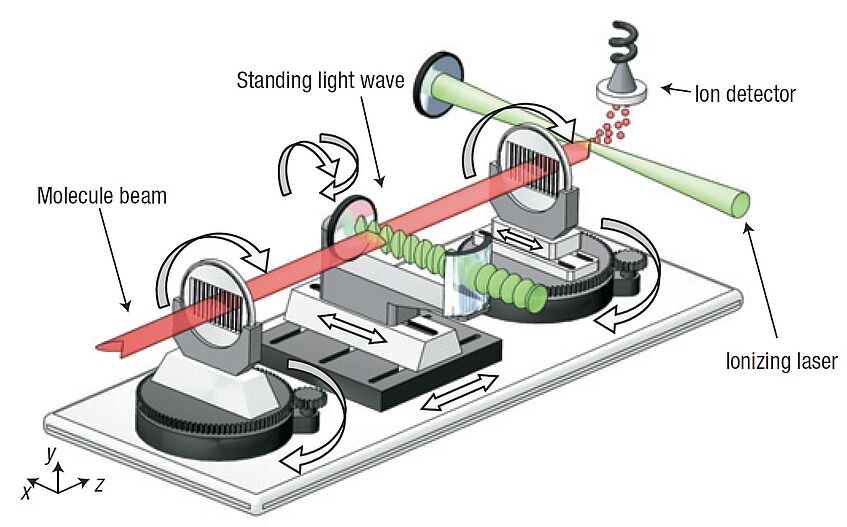The Concept of Kapitza-Dirac-Talbot-Lau interferometry

Schematic of the KDTLI: the mechanical grating G1 prepares matter-wave coherence. The optical phase grating G2 manipulates the delocalized molecular wave and the mechanical grating G3 probes the molecular nanopattern that emerges by virtue of matter-wave interference.
The Concept of Kapitza-Dirac-Talbot-Lau interferometry
The Kapitza-Dirac Talbot-Lau interferometer (KDTLI) consists of three gratings. The first grating G1 acts as a comb of collimators: each of its slits constitutes a coherent source for the second grating. The second grating G2 is responsible for the actual diffraction: behind G2, at integer multiples of a characteristic length, referred to as the Talbot length, self-imaging of the grating occurs. Each slit of G1 generates such an image behind G2, shifted by multiples of the grating period of G1. If the grating periods of G1 and G2 match, these images add up constructively. Finally, a third grating G3 of the same period is placed at (integer multiples of) the Talbot distance. By recording the intensity modulation at the detector while scanning G3 across the molecular density pattern, the interference fringes can be resolved.
References
- S. Gerlich, L. Hackermüller, K. Hornberger, A. Stibor, H. Ulbricht, M. Gring, F. Goldfarb, T. Savas, M. Müri, M. Mayor and
M. Arndt,
A Kapitza-Dirac-Talbot-Lau interferometer for highly polarizable molecules,
Nature Physics 3, 711-715 (2007).
